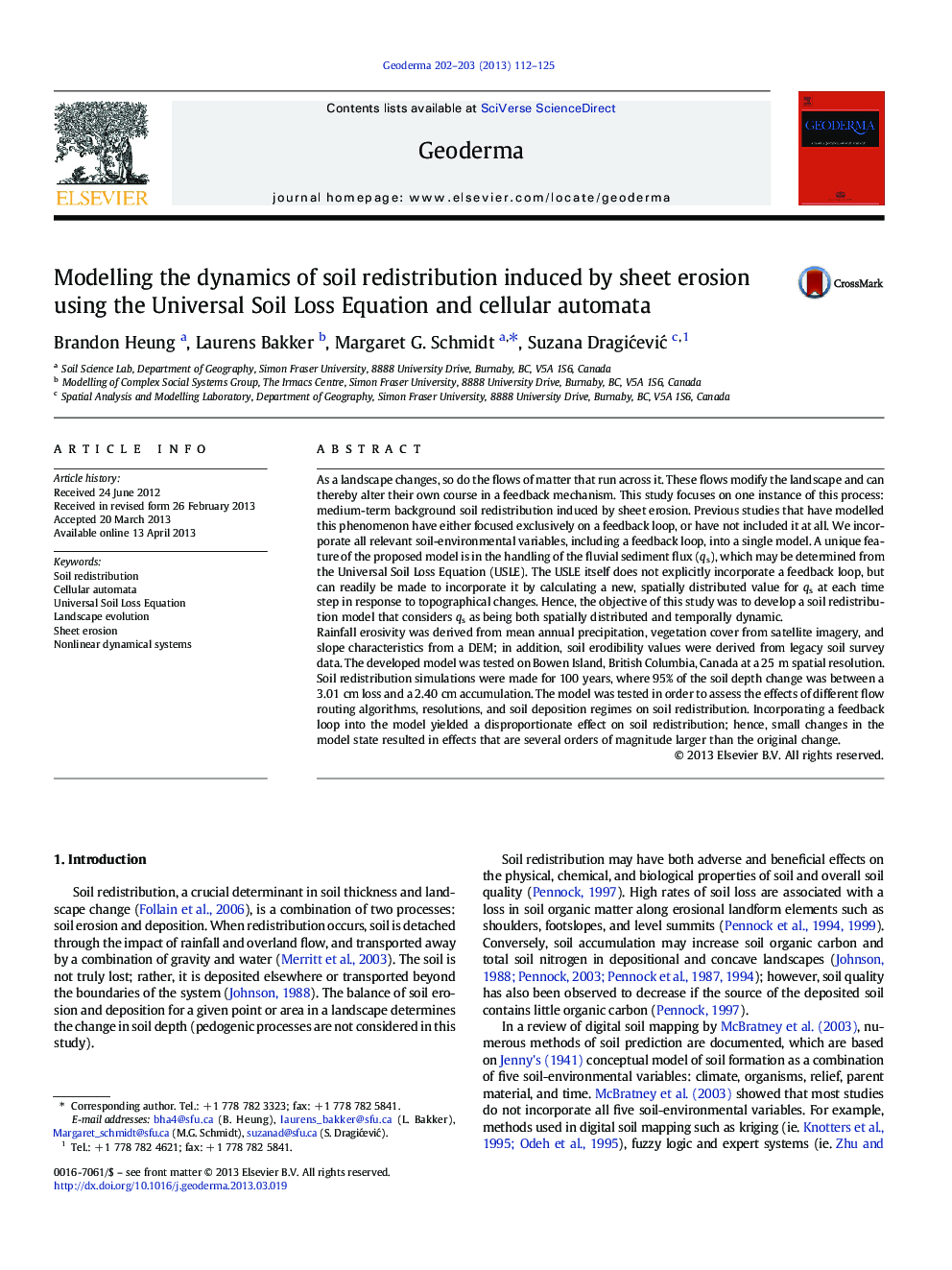| کد مقاله | کد نشریه | سال انتشار | مقاله انگلیسی | نسخه تمام متن |
|---|---|---|---|---|
| 4573497 | 1629485 | 2013 | 14 صفحه PDF | دانلود رایگان |

• A model for soil redistribution is developed using a cellular automata approach.
• The model uses a spatially distributed and temporally dynamic fluvial sediment flux.
• Spatial disaggregation of the USLE yields a simple, yet detailed model.
• The time component proved essential in modelling soil redistribution.
As a landscape changes, so do the flows of matter that run across it. These flows modify the landscape and can thereby alter their own course in a feedback mechanism. This study focuses on one instance of this process: medium-term background soil redistribution induced by sheet erosion. Previous studies that have modelled this phenomenon have either focused exclusively on a feedback loop, or have not included it at all. We incorporate all relevant soil-environmental variables, including a feedback loop, into a single model. A unique feature of the proposed model is in the handling of the fluvial sediment flux (qs), which may be determined from the Universal Soil Loss Equation (USLE). The USLE itself does not explicitly incorporate a feedback loop, but can readily be made to incorporate it by calculating a new, spatially distributed value for qs at each time step in response to topographical changes. Hence, the objective of this study was to develop a soil redistribution model that considers qs as being both spatially distributed and temporally dynamic.Rainfall erosivity was derived from mean annual precipitation, vegetation cover from satellite imagery, and slope characteristics from a DEM; in addition, soil erodibility values were derived from legacy soil survey data. The developed model was tested on Bowen Island, British Columbia, Canada at a 25 m spatial resolution. Soil redistribution simulations were made for 100 years, where 95% of the soil depth change was between a 3.01 cm loss and a 2.40 cm accumulation. The model was tested in order to assess the effects of different flow routing algorithms, resolutions, and soil deposition regimes on soil redistribution. Incorporating a feedback loop into the model yielded a disproportionate effect on soil redistribution; hence, small changes in the model state resulted in effects that are several orders of magnitude larger than the original change.
Journal: Geoderma - Volumes 202–203, July 2013, Pages 112–125